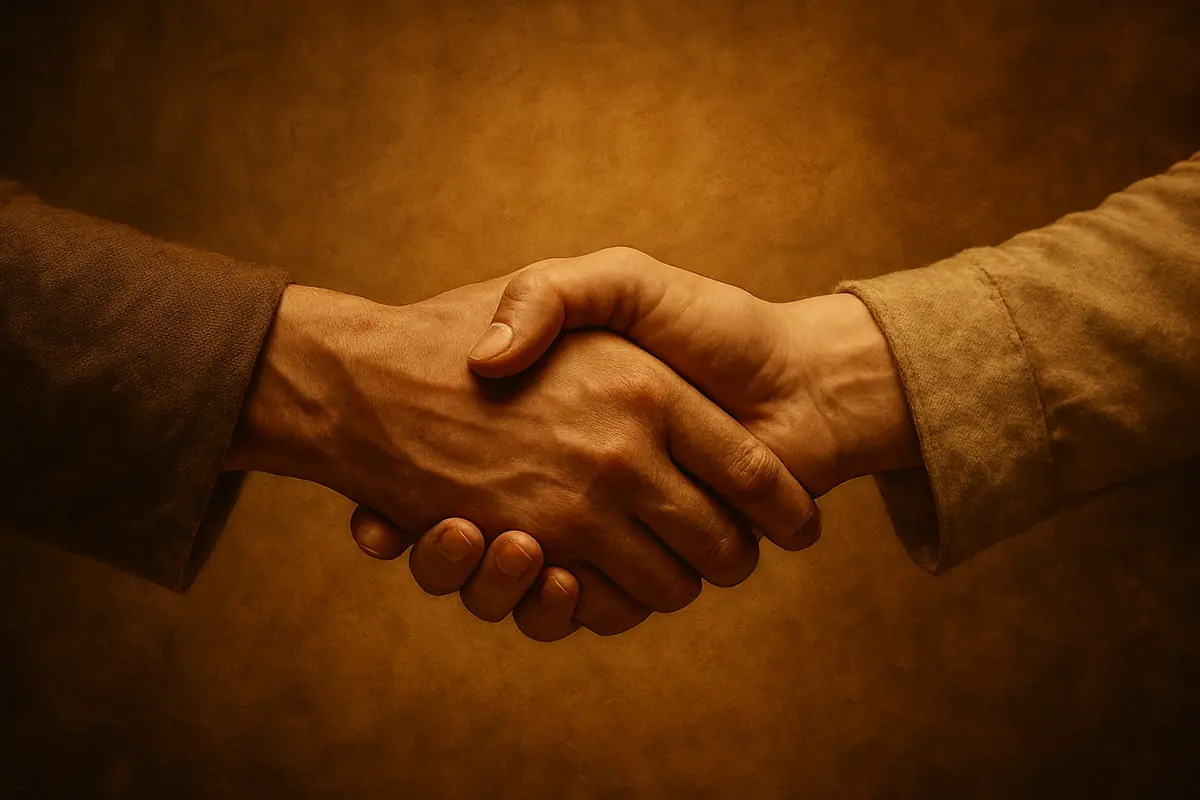Why We Shake Hands: The Surprising Story Behind a Simple Gesture
The handshake feels automatic today, but its origins stretch from ancient suspicion to global diplomacy, revealing how trust evolved across cultures.

We do it without thinking—grip, shake, release. For many of us, the handshake feels so natural that it’s easy to forget it had to be invented. But like most customs that survive thousands of years, this simple gesture carries a surprisingly rich story about trust, suspicion, and the way humans decide who they can rely on.
The earliest known handshakes go back over 3,000 years. Ancient carvings from Assyria and Babylon show kings clasping hands, not as a friendly greeting but as a solemn symbol of alliance. In a world where betrayal could spark wars, the gesture wasn’t casual—it was a commitment. To shake someone’s hand meant you were entering a pact in full view of the gods.
But the origin most people know is the “weapon check.” In ancient Greece, when strangers approached, they extended their empty right hands to show they were not holding daggers. The shake itself wasn’t just a greeting—it was a test. A firm, jostling grip proved nothing was hidden up the sleeve. The gesture spread through Greek city-states because it solved a universal problem: how to reduce fear when meeting someone new.
By the Roman era, the handshake evolved into something more dramatic: the “forearm clasp.” Soldiers and officials gripped each other’s arms to check for concealed blades. It was practical, but it wasn’t friendly. Respectful? Yes. Warm? Not really.
The modern handshake—the palm-to-palm version we recognize today—didn’t solidify until the 17th century. Quakers in England embraced it as a symbol of equality. Instead of bowing or curtsying, which reinforced hierarchy, they preferred a plain, honest grip between equals. Their belief that every person deserved dignity helped normalize the gesture far beyond their communities.
By the 19th century, etiquette books around the world presented the handshake as the “proper” form of greeting among respectable adults. Its meaning shifted again: no longer about weapons, it became a marker of politeness, professionalism, and mutual respect.
Even pandemics couldn’t quite erase it. During outbreaks—from the Spanish flu to COVID-19—people questioned whether the handshake should survive. And yet, every time, it returned. Why? Because at its core, the gesture does something powerful: it creates a tiny moment of shared humanity. A handshake says, I acknowledge you. I trust you. We meet as equals.
Next time you extend your hand, remember you’re participating in a ritual older than most civilizations—a small but enduring act that has helped strangers become allies for thousands of years.